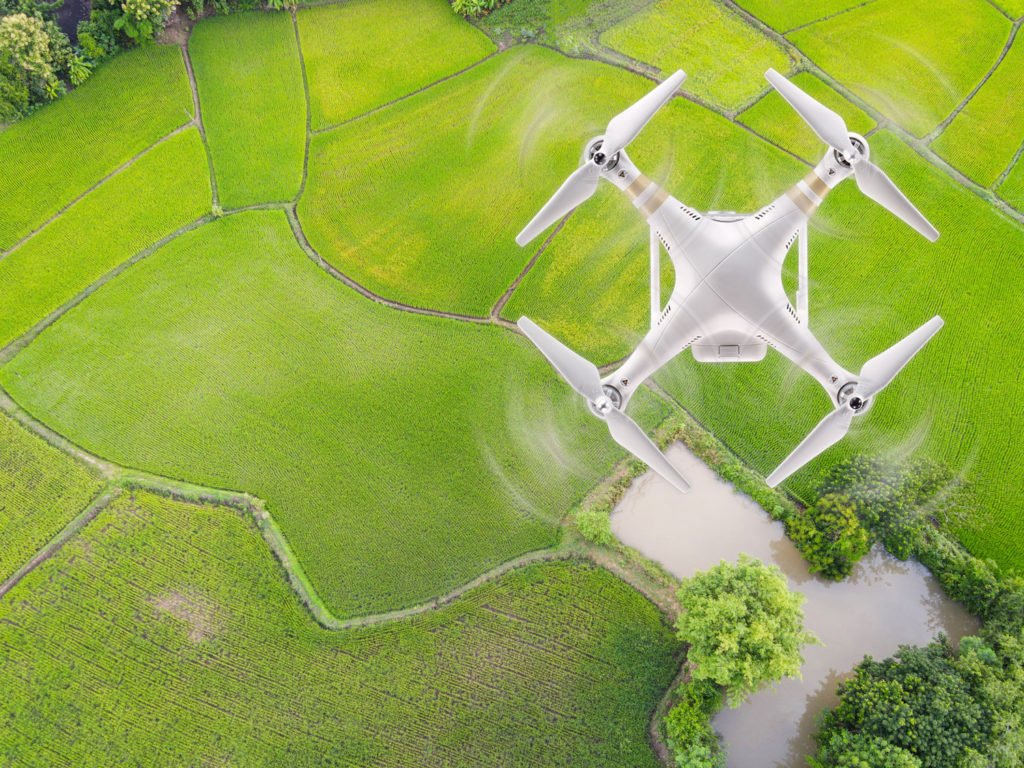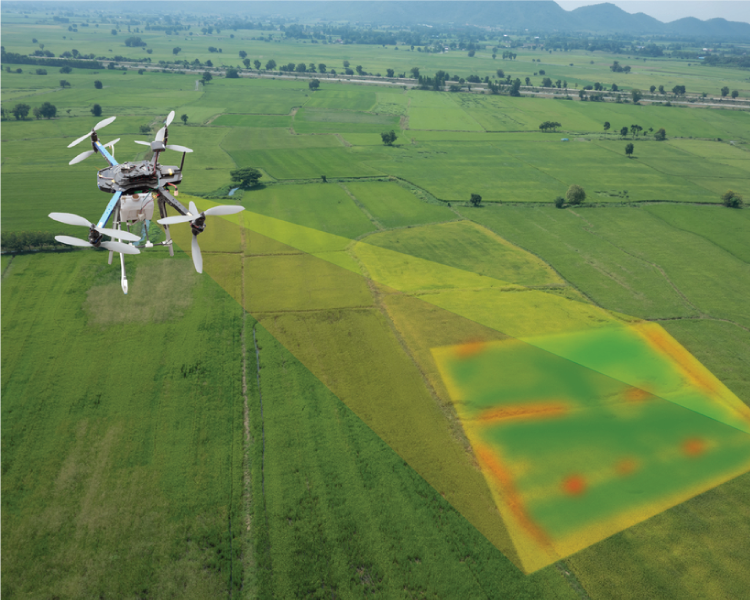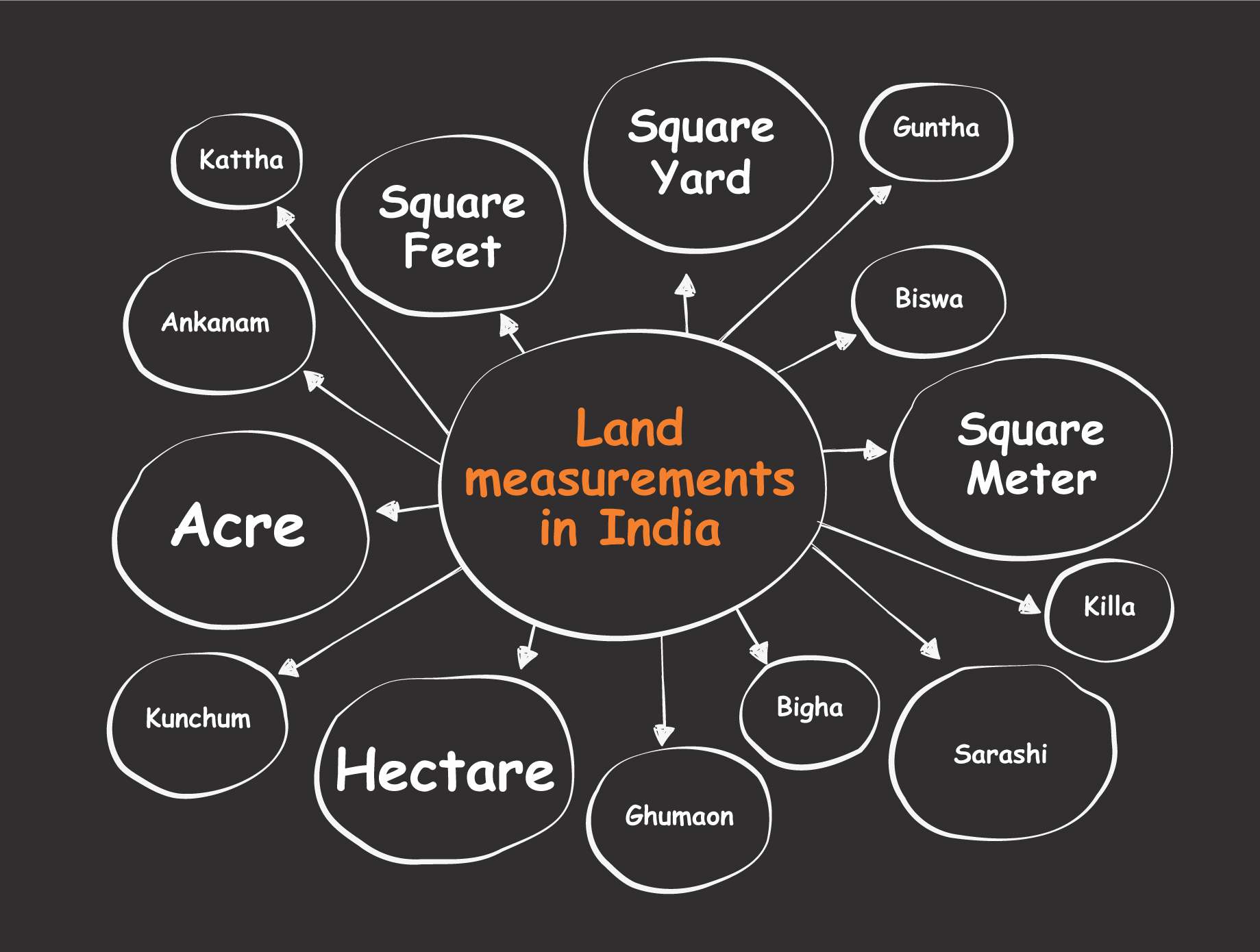Indian agriculture
With over 1.5 million hectares of agricultural land in India (that’s around 38% of the country’s landmass), it’s easy to see why farming is such a huge contributor to the Indian economy. Indeed, agriculture accounts for approximately 18% of India’s GDP and is the primary income source for some 58% of Indians. Despite these facts, Indian agriculture, as a whole, has been slow to adopt new technologies to support farmers and there is an urgent need for more farmers to embrace technology and provide a boost to the industry. In recent years, though, the Indian government has actively encouraged the use of drones in Indian agriculture by removing restrictions on the use of drones.
The predicted world population will be 9 billion by 2050, and with that the Agricultural consumption is estimated to increase by nearly 70%, according to experts.
Indian farmers are facing many problems like unavailability or high cost of labour, health problems by coming in contact with chemicals (fertilizers, pesticides, etc.) while applying them in the field, bite by insects or animals, etc. In this context, drones can also help farmers in avoiding these troubles in conjunction with the benefits of being a green technology. Drones are nowadays emerging as a component of precision agriculture along with contributing to sustainable agriculture. Various sensors are used in the drones based upon the purpose. Mostly the sensors sensitive to the following bands of electromagnetic waves are used in agriculture.
Drones in agriculture
Such reliance on farming to support not just local populations but also the Indian economy has seen the most innovative farmers seek improved ways to manage their farms and their crops to produce greater yields and greater profits. Traditional farming methods no longer meet the needs of a rising population. Drone technology offers a far more efficient and cost-effective way of monitoring crops, irrigation, and applying pesticides.
- Drone technology uses different sensors based upon the purpose. Mostly the sensors sensitive to the following bands of electromagnetic waves are used in agriculture:
- Red, Green, and Blue (RGB) bands: These bands are used for counting the number of plants, for modeling elevation, and visual inspection of the crop field.
- Near Infra-Red (NIR) band: This band is used for water management, erosion analysis, plant counting, soil moisture analysis, and assessment of crop health.
- Red Edge band (RE): It is used for plant counting, water management, and crop health assessment.
- Thermal Infra-Red band: This band has applicability in irrigation scheduling, analyzing plant physiology, and yield forecasting.
Application of Drones in Agriculture
There are various applications of drones in agriculture which are briefly discussed below:
- Soil and Topography analysis
- Soil and Field Analysis
- Drone for Planting
- Drones for Spraying
- Irrigation monitoring
- Weed identification
- GEO fencing
- Insurance
- Crop health and surveillance
- Livestock tracking

Soil and Topography analysis
Drones used in agriculture are fitted with AI technology. This gives them the ability to monitor the land. Prior to the introduction of drones to the industry, forward-thinking farmers relied on satellite images to guide farm management. But compared with the detailed information available via drones, that offered by satellite images pales into insignificance. A drone can provide a comprehensive topographic survey of the land to provide accurate data on which to base decisions such as crop rotation. Quality of soil is one of the most important factors which affects the quality of crops. Such accurate soil data puts farmers in a better position than ever to be able to target areas that require improvement.
Drones for planting
One of the lesser-known benefits of drones in agriculture is their use for planting. Drones can be used to shoot seeds and pods into the ground with precision to improve consistency and up to 10 times faster than humans. Costs of planting can be reduced by up to 85% and, once again, staff can be employed elsewhere on the farm. Perhaps fixing a leak or taking steps to improve soil quality in an area in which drones have identified a problem.
Drones for spraying

The most obvious benefit of drones in agriculture is their ability to cover so much ground so quickly. So, for example, pesticides can be sprayed approximately 10 times faster by drone than they can by traditional methods. And that doesn’t account for the harder-to-reach areas which can be particularly challenging on foot. There is also the added benefit that human contact with potentially harmful chemicals is minimized. If fitted with RGB sensors, drones can even be relied upon to monitor crops and apply pesticides automatically where the need arises. But drones offer far more to agriculture than simply speed.
Irrigation monitoring
Drones fitted with thermal imaging technology monitor farmland to identify areas that are too dry. Farmers can then address the issue, either through the use of further drones or by allocating their human resources efficiently. Likewise, drones will draw attention to leaks and areas of pooling water. The scarcity of water makes preventing any loss a priority for farmers.
Weed identification
Weeds are amongst the most impacting abiotic factors in agriculture, causing important yield loss. Integrated Weed Management coupled with the use of Unmanned Aerial Vehicles (drones), allows for Site-Specific Weed Management, which is a highly efficient methodology as well as beneficial to the environment. The identification of weed patches in a cultivated field can be achieved by combining image acquisition by drones and further processing by machine learning techniques. Specific algorithms can be trained to manage weeds removal by Autonomous Weeding Robot systems via herbicide spray or mechanical procedures.
Crop health surveillance

Drone technology supplies precise information throughout the growing season on the health of crops and of the land. This data can then be used to drive decision making and drones can be employed to rapidly counter issues such as fungal or bacterial infection. This inevitably leads to greater yields, greater profits, and a year-on-year improvement in soil quality. In circumstances where the crops are damaged beyond repair, detailed information about naturally occurring problems can be supplied to insurance companies. Farmers will also be able to demonstrate that they used the best possible equipment to try to prevent crop loss and this will help counter any claims of negligence on their part.
Drones capture images of crop conditions and create Normalized Differential Vegetation Index (NDVI) maps.
The UAVs, with multispectral and Near Infrared (NIR) analysis, can help create Normalized Distribution Vegetation Index (NDVI) or Weighted Distribution Vegetation Index (WDVI). This, in turn, helps with chlorophyll and health tracking (crops). The farmers, with drones, can easily spot any infected plant or batch in a quick time. They don’t have to spray the entire zone but just the plants in need. This cuts down the overuse of pesticides. Furthermore, the regular vitality tracking of the standing crop (with multispectral imaging) pushes the farmer to pay attention to special sections of the field.
Geofencing or protecting the field from animal damage
The thermal cameras mounted over drones can detect animals or human beings during the night. So, it can be used to protect fields from the damage caused by animals, which are otherwise difficult to detect in the large fields during nighttime. So, it will work more efficiently than human guards.
Crop insurance
Drones can be used for precisely estimating and monitoring crop failure. So, it can be helpful for the farmers as well as for insurance companies in providing insurance claims based on the degree of damage. This technology has great potential in the accurate and effective implementation of crop insurance schemes, namely Pradhan Mantri Fasal Bima Yojana in India without any bias.
Livestock tracking
As in arable farming, drones can be used by livestock farmers to monitor their land. With livestock spending so much time out in the fields and pastures, keeping track of it can be both time-consuming and resource-intensive. Drones can keep track of herds, find lost animals, and scan farmland for potential threats. They can even identify sick or injured livestock giving farmers the best possible chance of providing assistance.
Drones help farmers optimize the use of inputs such as seeds, fertilizers, water, and pesticides more efficiently.
Conclusion
Agriculture is an industry laden with factors that farmers cannot control such as economics, disease, and weather. For the first time in history, drone technology provides an opportunity for precision farming. It gives landowners access to accurate data from which to plan how best to use their resources and plan their year.
Using drone technology to understand the quality of soil and the current state of farmland alone, would have been enough to satisfy generations of farmers. But the ability to then accurately monitor the farm throughout the year and amend their approach accordingly gives modern farmers a unique set of benefits never before seen.
Agricultural drones are the future of Indian farming. By 2050, it is estimated that the global population will be 9 billion with 1.64 billion people living in India. Experts say this increase will lead to a 70% increase in demand for agricultural produce. Without drone technology, Indian farmers can’t possibly hope to achieve an increase in output to meet the demand.
Drone technology and its capabilities will continue to improve and with each new advancements, yields will increase. Farmers still insisting that traditional methods are the way forward are falling by the wayside. Those who embrace the technology available to them do not merely give themselves a competitive advantage now – they also set themselves up to make the best use of future developments. The face of Indian farming has changed. Indian farmers must change too.









